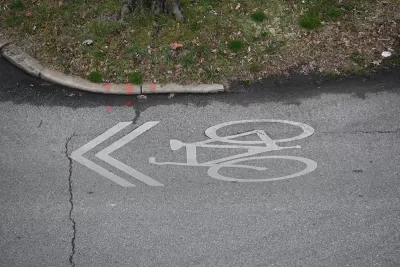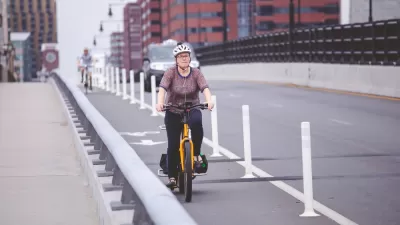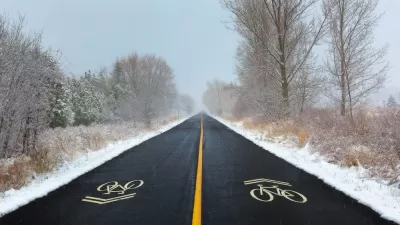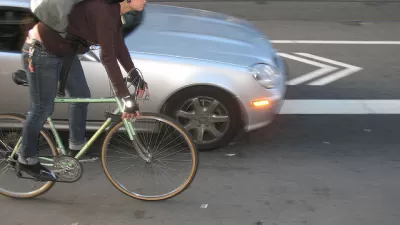Research shows there’s no substitute for protected bike lanes, and sharrows may make roads more dangerous for cyclists.

Once a positive step for bike infrastructure, sharrows — “those little bike-shaped icons painted onto roads that are supposed to indicate where cyclists should ride” — are falling out of favor and could actually endanger people on bikes.
According to an article in Momentum, “Studies have shown that sharrows don’t actually provide any real safety benefits for cyclists. In fact, they may even make things worse by encouraging drivers to pass cyclists too closely.”
Dave Snyder, senior director of People For Bikes and a formerly passionate advocate for sharrows, has admitted that they haven’t worked. “Today, we know so much more about what it takes to make our streets safer for bicycling. We need separate bike paths; we need protected bike lanes on busy roads; and where the lanes are shared, we need actual speeds reduced to 20 mph or slower.”
The article concludes that there’s no substitute for safe, physically protected bike lanes. “The best bicycle infrastructure for safe cycling is dedicated bike lanes that provide physical separation between cyclists and vehicles.
FULL STORY: Sharrows used to make sense in theory, but are now mostly useless and possibly dangerous

Manufactured Crisis: Losing the Nation’s Largest Source of Unsubsidized Affordable Housing
Manufactured housing communities have long been an affordable housing option for millions of people living in the U.S., but that affordability is disappearing rapidly. How did we get here?

Americans May Be Stuck — But Why?
Americans are moving a lot less than they once did, and that is a problem. While Yoni Applebaum, in his highly-publicized article Stuck, gets the reasons badly wrong, it's still important to ask: why are we moving so much less than before?

Research Shows More Roads = More Driving
A national study shows, once again, that increasing road supply induces additional vehicle travel, particularly over the long run.

Judge Halts Enforcement of Anti-Homeless Laws in Grants Pass
The Oregon city will be barred from enforcing two ordinances that prosecute unhoused residents until it increases capacity and accessibility at designated camping sites.

Advancing Sustainability in Los Angeles County Schools
The Los Angeles County Office of Education’s Green Schools Symposium brings together educators, students, and experts to advance sustainability in schools through innovative design, climate resilience strategies, and collaborative learning.

Using Old Oil and Gas Wells for Green Energy Storage
Penn State researchers have found that repurposing abandoned oil and gas wells for geothermal-assisted compressed-air energy storage can boost efficiency, reduce environmental risks, and support clean energy and job transitions.
Urban Design for Planners 1: Software Tools
This six-course series explores essential urban design concepts using open source software and equips planners with the tools they need to participate fully in the urban design process.
Planning for Universal Design
Learn the tools for implementing Universal Design in planning regulations.
City of Moreno Valley
Institute for Housing and Urban Development Studies (IHS)
City of Grandview
Harvard GSD Executive Education
NYU Wagner Graduate School of Public Service
City of Cambridge, Maryland
Newport County Development Council: Connect Greater Newport





























